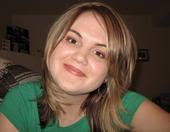Our Journey with Infantile Spasm Syndrome: Part 3

At his six-month appointment, Josiah had been on track developmentally. Now, just a few days after he was admitted to the children's hospital and diagnosed with Infantile Spasm Syndrome, we were informed by a hospital pediatrician that his motor skills had lapsed to that of a 4 month old. We already missed the smiles and giggles that we had come to know and love in our little boy. It was clear that he wasn't feeling well.
At night, I would stay with Josiah while Kevin went home (there was only one short couch in the room), and during the day Kevin would stay while I ran home for a shower and a nap. The prayers, visits, calls and words of support from our friends and family sustained us during this time. We were blessed to have repeated visit from Kevin's parents and sisters (who live in the area) as well as pastors from our church and friends who brought us meals, flowers and Starbucks. It was those kindnesses and the prayers of so many that lifted us up and gave us peace.
On Tuesday or Wednesday, we began ACTH injections—one shot in the thigh each morning. ACTH (Acthar Gel) is an interesting treatment. It is a steroid that has been used in treating infantile spasm for many years (nearly 30 in Dr. G's case) and yet they don't know exactly how it works. For this reason, it was only recently approved by the FDA (in 2009). This was great news for us, because ACTH is very expensive and used to be difficult to get insurance to cover. According to Wikipedia:
Once relatively inexpensive, Acthar Gel is currently an extremely expensive pharmaceutical product. Prices per vial have been as high as $47,000.
That is how ACTH got its nickname "liquid gold." ACTH also has some really nasty side effects, including the risk of serious bacterial infections, irritability, digestive problems, uncontrollable appetite, high blood pressure and weight gain. As one of the pediatricians told us, "The medicine is almost as nasty as the disease." While on ACTH, Josiah would have to get his blood pressure taken twice a week and take an antacid.
After we started Josiah on ACTH, his spasms stopped entirely within the day. This was encouraging because Dr. G had told us that the best sign that the treatment was working was for the seizures to stop within three days. Dr. G was also watching to see if Josiah's brain activity would normalize. An EEG a few days later revealed that there were still some abnormal electrical charges going on, but we were relieved that Josiah was no longer having noticeable seizures. He also seemed to be regaining some of his former joy.
We ended up having to stay at the hospital for almost a week. We started Josiah on ACTH about the middle of the week, but we were not allowed to leave the hospital until we could get the medicine delivered to our home (for obvious reasons). Each day, Josiah seemed a little better and by Friday, when it was time to leave, he was even smiling.
We already had so much to be thankful for, but there were still some difficult days ahead.









